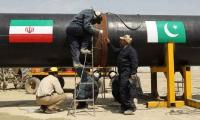There has been a major border clash and mutual distrust between the world’s two most major nuclear armed neighboring countries, India and China. In 1962, brief war was fought by China and India over their disputed border in Himalayas which resulted with a truce and the establishment of a “de facto boundary” (An international or administrative boundary whose existence and legality is not recognized, but which is a practical division between separate national and provincial administering authorities), which is called as the Line of actual control (LAC). LAC is basically a demarcated line which roughly separates Chinese controlled territory from the Indian controlled territory, but the two countries disagree over on the exact location of LAC.
Furthermore, China and India have made efforts to form their claims to territory by heavily militarizing the region. Both countries have built airstrips, outpost stations, roads and other infrastructures. Troops from both sides conduct patrols along the disputed border on a daily basis. China claims more than 90,00sq km in the eastern Himalayas and another in 38,000sq km in the west, both of which are disputed by India. This has caused occasional flare ups and fragile peace ever since, particularly in 2013 and 2017.
Between China and India, there has never been an official border, since the area where the disputes took place is a hostile territory located at a high altitude, moving across area of Ladakh bordering Tibet, sparingly populated with Buddhist majority and is known to be famous tourist site.
China and India, since late April have been a part of a major conflict which erupted when thousands of Chinese troops along with weapons and vehicles, were sent to the disputed territory located along the LAC. According to some of the analysts, the Chinese government, which has been indulged in building infrastructure in the area, is concerned to aggravate any action by India for the advancement of its own military installations. The rejection of China to leave the disputed areas, including the Galwam Valley which is located inside the Indian Territory, has provoked stone throwing, shouting matches and fist fights in the major border areas. Previous month, there was a major fight between the patrols but it resulted in no deaths.
Unfortunately according to the latest news, almost twenty people have lost their lives, as a result of the fighting which broke out on Monday evening, along the disputed Himalayan border moving along Ladakh. According to some sources the fight was initiated when an Indian patrol came across the Chinese forces on a constricted ridge. During the clash, a commanding officer of India was pushed due to which he fell into the gorge river. This caused hundreds of troops to fight with rocks and clubs which resulted in several deaths. It is the first deadly clash since 1975 and the most severe since 1967.
According to the Indian army, causalities occurred on both sides and gave the confirmation of the deaths of its three soldiers as a result of the clash. But later on Tuesday the army added that 17 more “who were critically injured in the line of duty at the stand-off location and exposed to sub-zero temperatures in the high altitude terrain have succumbed to their injuries, taking the total that were killed in action to 20”.On the other hand China’s defense minister confirmed the incident had resulted in causalities but refused to give any other details, instead accused India of crossing the border line twice and “provoking and attacking Chinese personal, resulting in serious physical confrontation between border forces on the two sides”.
This conflict has immense geopolitical consequences worldwide as both China and India are the two most major nuclear powers and both countries are led by the governments which pursue nationalist lines and both of whose militaries are known as the formers of national pride and status.
Chinese media has informed that the People liberation army (PLA) is conducting combined military exercises “aimed at the destruction of key hostile hubs in a high-elevation mountainous region”. On Tuesday PLA Tibet Military Command has conducted fire drills with heavy weaponry, with news concerning the PLA’s preparation for increased combat to the clashes with India. Both countries have been working towards “de-escalation” in the recent weeks but the deaths of the soldiers on both sides makes the scenario more complicated and dangerous. There are more or less equivalent chances of the situation getting worse or better, hence, no judgment about the future scenario can be conceded.
— The writer is a student of international relations at National Defence University, Islamabad
This image shows the Commission on Science and Technology for Sustainable Development in the South building in...
This representational image shows a teacher taking a class. — AFP/FileIslamabad:In a ground breaking move, the...
This image shows the logo of the Women’s Action Forum . — Facebook/Women's Action Forum, Islamabad/FileIslamabad:...
Aziz Boolani, CEO of Serena Hotels cut a ribbon along with Islamabad Foreign Women’s Association officials during...
Participants pose for a group photo at a ceremony on May 2, 2024. — Radio PakistanIslamabad:Dr. Akbar Niazi Teaching...
Women boarding the Pink Bus after the inauguration ceremony in Karachi on February 1, 2023. — OnlineIslamabad: The...







